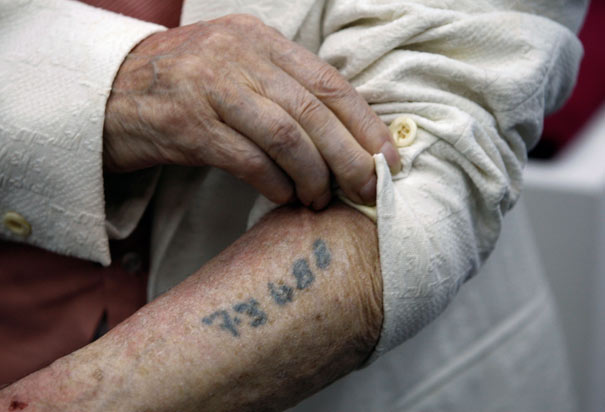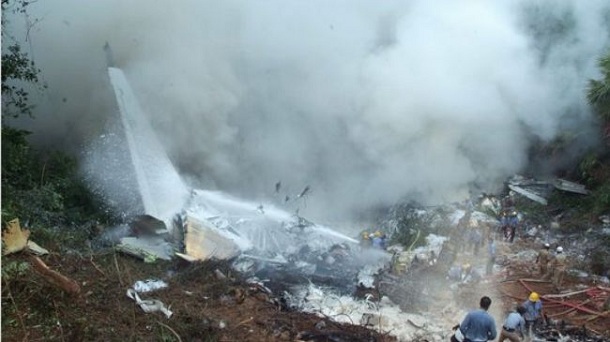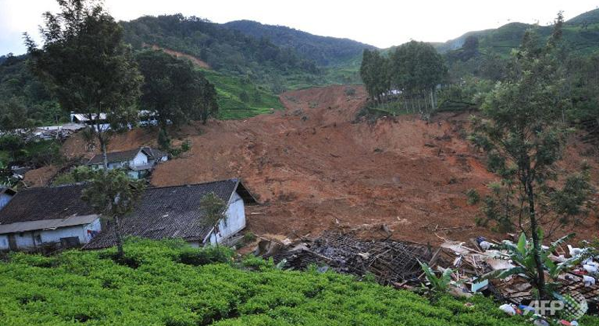
Twenty five years ago, you would have been hard-pressed to find a Jewish person with a tattoo that they did not receive at Auschwitz during the Holocaust.
Even more so, you would have had a hard time finding a Jewish person who would willingly show off that tattoo. It just wasn't something that was spoken of, or practiced, especially in the Jewish community.
But it's 2013, and like Bob Dylan, a Jew himself so eloquently wrote "the times they are a-changin' " and it seems as if an increasing number of Jews are getting tattoos despite what tradition and the Torah says or the potential wrath of their Jewish mother. Additionally, it is becoming more and more popular to get a Jewish tattoo, or a tattoo that inspires Jewish pride in its wearer.
Before the growing trend is examined, it's important to find out where the prohibition of tattooing comes from and what, if any, are the consequences of having a tattoo.
The biblical source
Most rabbis and Jewish leaders point to a verse in Leviticus 19:28 that states: "You shall not make gashes in your flesh for the dead, or incise any marks on yourselves: I am the Lord."
In a paper adopted by the Committee on Jewish Law and Standards of the Rabbinical Assembly, Rabbi Alan B. Lucas explains that the second half of the passage "or incise any marks on yourselves" is where the general prohibition against tattooing originates. While many agree that this passage is the source for the prohibition, Lucas goes on to explain that many different reasons as to why the rule against tattooing exist.
He cites a passage in Mishnah Makkot 3:6 that states, "If a man wrote (on his skin) pricked-in-writing, he is not culpable unless he writes it and pricks it in with ink or eye-paint or anything that leaves a lasting mark," reasoning that the permanent nature of tattoos is the basis for the prohibition. Additionally, a passage from Maimonides that states, "This was a custom among the pagans who marked themselves for idolatry" (Laws of Idolatry 12:11) leads many to believe that the reasoning is based on the fact that pagans used to tattoo the names of their gods on their bodies as a sign of loyalty, and we, as Jews need to distinguish ourselves from them and not carry out their practices.
Rabbi Jessy Gross, the community outreach rabbi at the Jewish Community Center in Baltimore, explained that tattooing in the Jewish religion may be prohibited because many believe Jews are created "b'tselem Elokim" or in the image of God.
"Jews believe that our bodies aren't really ours and if God wanted us to have a tattoo, then we would have been born with it. Who are we to manipulate the merchandise that's on loan to us from God?" she said.
The end of the passage "I am the Lord" has also been interpreted to mean that it is prohibited to get the name of God tattooed on your body, a rule that Gross feels has been "black and white agreed upon by all generations," and widely upheld.
Debunking a myth
Many choose to not get a tattoo for fear that they will not be allowed a burial in a Jewish cemetery. While it is not certain where this mythical rule came from, it is widely agreed upon by rabbis that this rule is false.
"There is a teaching that active sinners cannot be buried in a Jewish cemetery, and it's a myth that has been perpetuated over time," said Rabbi Shira Stutman of Sixth & I Historic Synagogue in the District. "The mind-set is if someone is going to eat pork, once they die they're no longer eating pork, so they can be buried in a Jewish cemetery, but if someone has a tattoo - they'll still have it when they die, so they would still be an active sinner and not able to be buried in a Jewish cemetery - it's not true."
Rabbi Julie Schonfeld, executive vice president of The Rabbinical Assembly, agreed with Stutman and added that not only are Jews with tattoos allowed to be buried in a Jewish cemetery, but they may also participate in Jewish ceremonies and services.
"Those who violate the prohibition may be buried in a Jewish cemetery. While we discourage people from the practice of getting tattoos, if we are presented with someone that has a tattoo, we don't exclude them from any Jewish practice," she said.
Why get a tattoo?
In her rabbinic thesis for the Hebrew Union College in Los Angeles, Rabbi Rochelle Tulik reasoned that many Jews today are using tattoos as a way to embrace their Jewish identity and display their Jewish pride on their bodies. She made the decision to test her theory, and surveyed nearly 500 people, 147 with tattoos. She found that of the 147, 40 percent of those with tattoos identified their tattoos as Jewish in some way.
"As with most tattoos, an overarching theme was a desire for the image or words to indicate some aspect of a person's identity (usually their Jewishness, but sometimes something more)," Tulik writes.
Stutman added that the number of students she sees with Hebrew or Jewish tattoos is on the rise.
"They see it as a subversive mark of pride and say 'I'm so proud to be Jewish, I'm going to get a foot-high Jewish star tattooed on me,' " she said.
Twenty-four-year-old Michelle Komrower got her first tattoo of the Hebrew word ahava (love) as a way to permanently combine her love for Judaism, and love for herself.
"I got this tattoo in Jerusalem when I was in Israel for the year. During this time I was going through a really rough time emotionally, a lot of which had to do with low self-confidence, and this was sort of a reminder to love myself and to love others," she said.
Since that first tattoo on her foot, Komrower has gotten two more, a dove on her hip and anklet with a feather on her other foot.
"My second and third tattoos symbolize coming to peace with myself, and a freedom from self-judgment and judgment of others," said Komrower, who grew up keeping Shabbat and kashrut in a Conservative home. "My tattoos, especially my Hebrew tattoo will always be with me and always remind me that Judaism is an important part of my life."
Similar to Komrower, Ethan, who chose not to have his last name published, got the Hebrew words "koach panimi" or resilience, tattooed on his shoulder when he turned 20.
"It's very personal to me as I have been through a lot of things in my life. It's a reminder when I see it everyday that life goes on, and it's important to keep pushing forward and not fret the small stuff," he said.
Remembering the past
One of the major deterrents for Jews thinking about getting tattoos is the Holocaust and the Jews in Auschwitz who without asking for them and being humiliated by the Nazis by losing their name and becoming a number," he said.
While young Jews like Komrower understand the negative stigma associated with Jews, the Holocaust and tattoos, she hopes that survivors understand that she means no disrespect with her three pieces of what she termed as body art.
"Getting a tattoo for me is about the art and beauty, and I understand how those forced to get them in the Holocaust would have a difficult time relating to that," said Komrower. "I don't feel that getting a tattoo should imply that young Jews have forgotten about the horrible things that went on in the Holocaust."
In her rabbinic thesis, Tulik brings up the example of photographer Marina Vainshtein, who has dedicated her skin to be a Holocaust memorial complete with prisoners in striped pajamas, swastikas and ashes.
"For her, tattoos represent a form of explicit personal commemoration and a continuation of historial memory," writes Tulik. "During WWII, Jews were tattooed against their will in a way that went against the mitzvot. How powerful then for Jews to reclaim the art as an act of defiance to those who tried to use these laws against them." In the conclusion of his paper, Lucas clarified that, according to the Shulchan Aruch, Yoreh De'ah 180:2 which states: "If it (the tattoo) was done in the flesh of another, the one to whom it was done is blameless," meaning that the Jews who involuntarily received tattoos in the Holocaust did not violate the Torah's prohibition of getting a tattoo.
A complicated issue
For many rabbis who work with young Jewish adults, the issue of Jews and tattoos falls into a larger category of the way that young Jews are defining their Judaism today. Tulik attributes the increase in Jews getting tattoos to the low number of young Jews becoming affiliated with synagogues and traditional communities and the fact that in mainstream American society, tattooing in general is becoming more commonplace and accepted.
"Young Jews are part of a much more mixed, integrated community where they have to figure out how to be Jewish in their worlds that aren't necessarily Jewish. They're trying to figure out how they can be like them [their non-Jewish peers], but also be Jewish at the same time. That's why they get a Jewish tattoo, or get a tattoo that somehow identifies them as Jewish. It's a way for them to encounter the cultural shift of tattoos being cool, and incorporating them into their own identity. They're looking at the rules of Judaism differently than they did 50 years ago.
"It's a complicated and evolving issue because as young Jews work to redefine their Judaism, they're not living in a world where we can just say, don't do this because I told you so."
Wednesday 30 January 2013
http://washingtonjewishweek.com/main.asp?SectionID=4&SubSectionID=4&ArticleID=18783






























